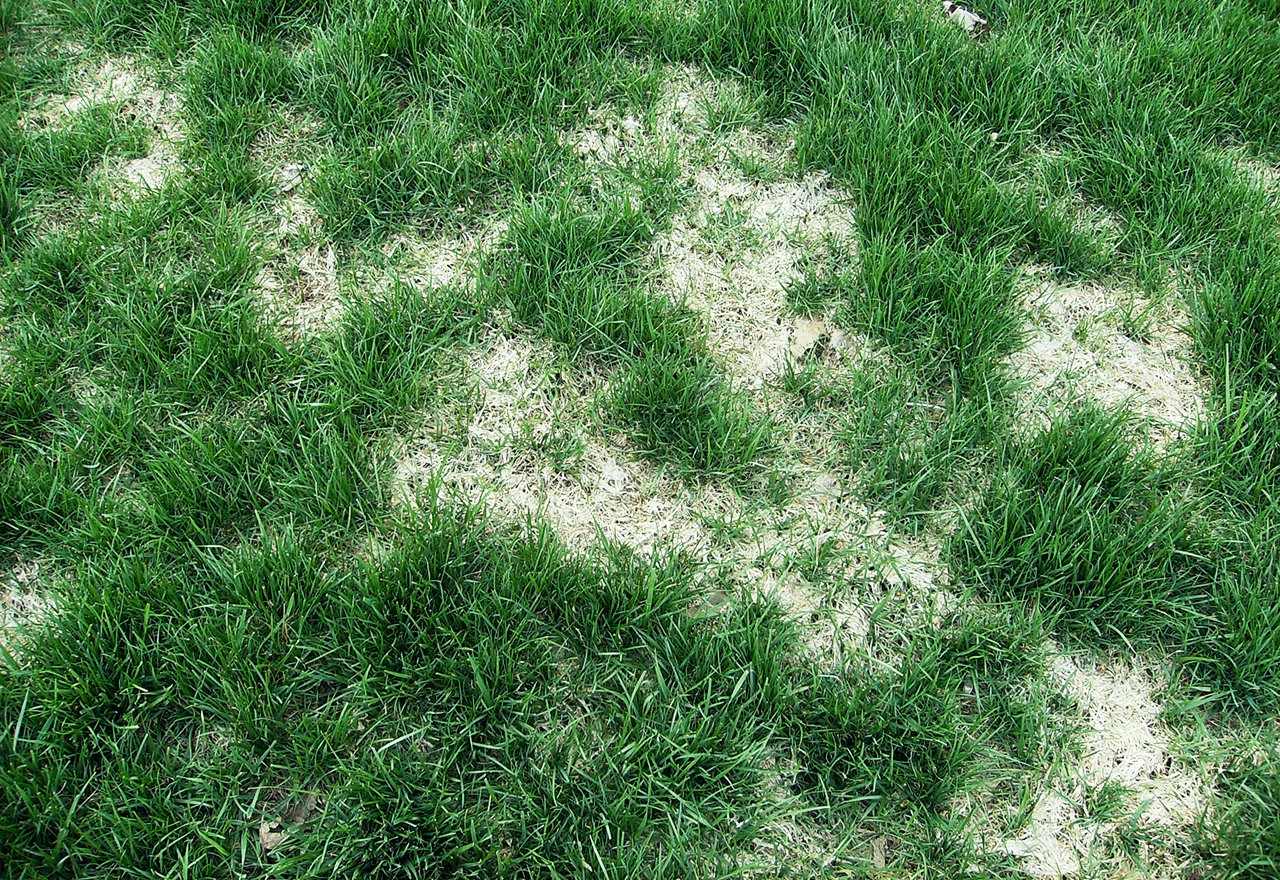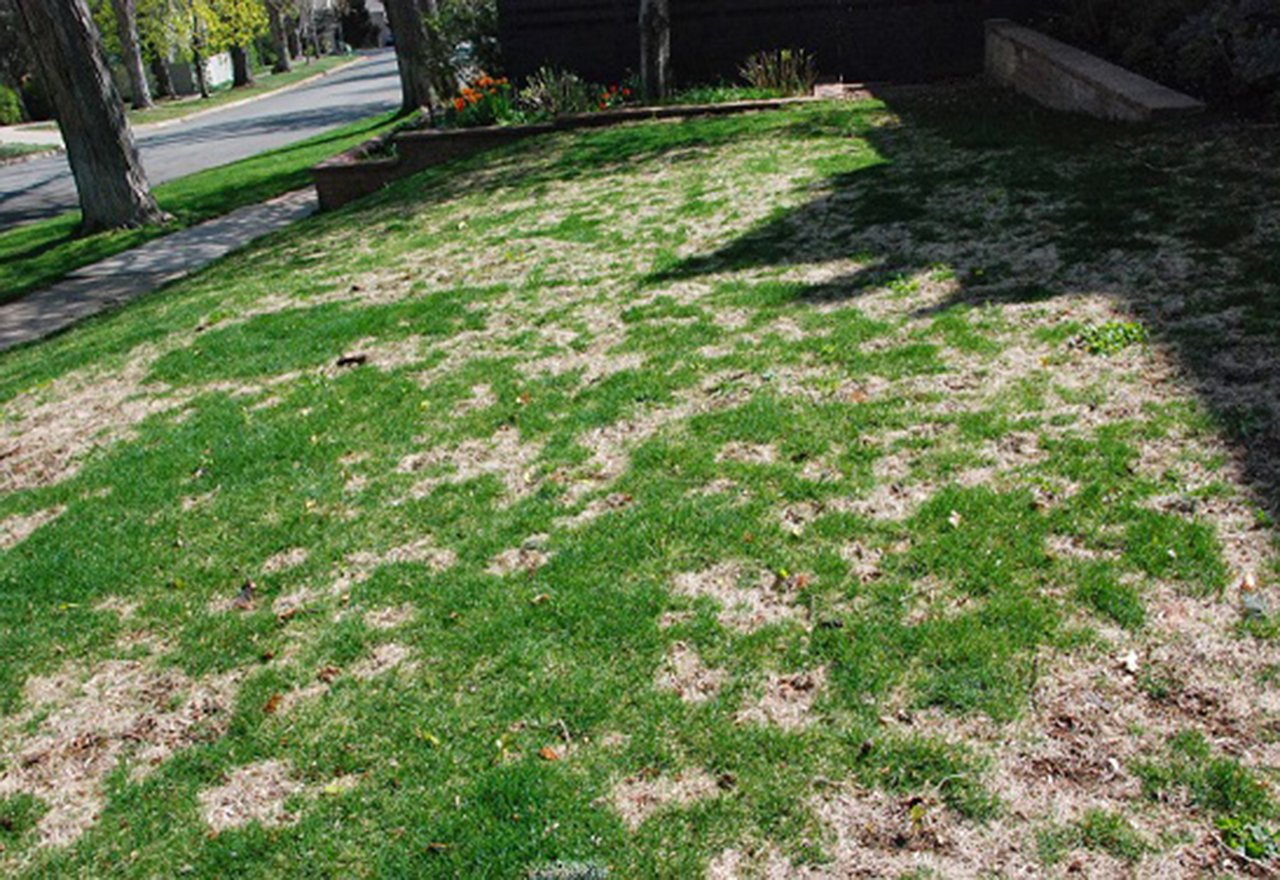A Cold Weather Fungus that Damages Your Grass After the Snow Melts

Snow Mold is caused by a fungus that is active during the Winter months, underneath the snow. The two fungal culprits are Gray Snow Mold (Typhula Blight), and Pink Snow Mold (Fusarium Patch). Snow Mold tends to be worse when the first snowfalls of the year are early and heavy enough to blanket the ground, which has not fully frozen. With continued snow accumulation, the warm ground actively harbors fungal growth, which results in matted down patches of discolored grass, usually straw-like, which become apparent as snow melts in the early Spring. Snow Mold may linger if the weather remains cool and damp, however, the faded patches will shrink as the temperature rises and the air becomes more dry. Generally, Snow Mold will not kill your grass, it just looks bad.
Snow Mold can be a sign of one or more of the following.
There isn’t much you can do about what’s already happened, but the good news is that the lawn will recover soon on its own. A little light raking will help speed up the process, but don’t rake too aggressively because that can potentially kill the grass. If Snow Mold is really bothering you, we can do Slice Seeding for you, which will help the old grass recover and get new grass established.
To prevent Snow Mold next year, make sure you mow your lawn late into the season with sharp blades, down to about 2 inches, so the grass doesn't fold over on itself. Also, consider a beneficial treatment of Liquid Aeration in the Fall to help open up the soil and encourage beneficial soil biology. Organic Compost Topdressing will also add Snow Mold fungi fighters to help your lawn.
